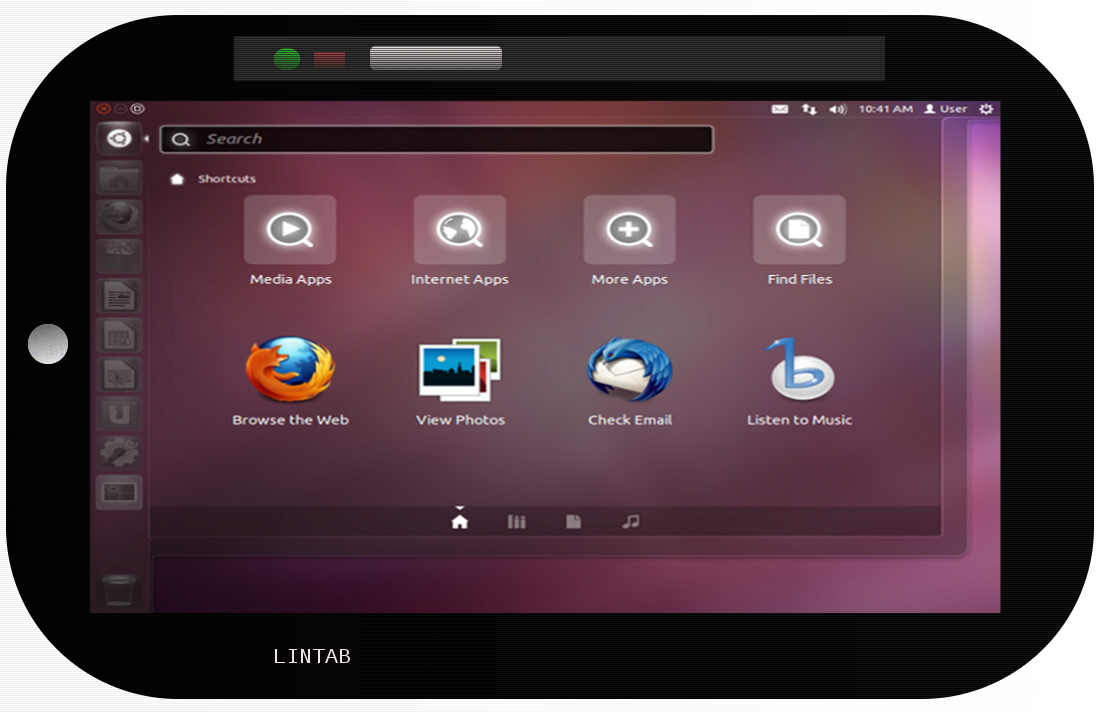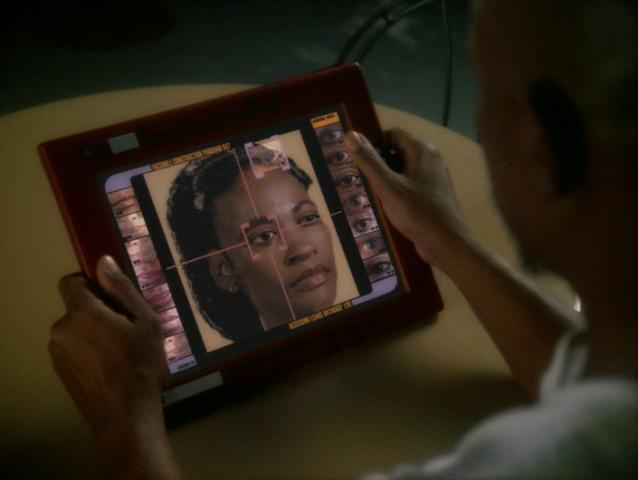
Summary: In this special edition of The Linux Week In Review, I will discuss the coming growth of GNU/Linux running on tablet computers. GNU/Linux on tablets was indirectly predicted by various devices on Star Trek years ago. The Star Trek PADD undoubtedly ran Free Software because commerce and for-profit motivations were a thing of the past by the 23rd and 24th centuries. However, we live in the 21st century where profit is still a huge motivator. GNU/Linux is a great way to maximize profits on tablet hardware.
Gene Roddenberry’s Vision
Gene Roddenberry, the creator of Star Trek, had a grand vision for the future of humanity. He envisioned a future where all humans would strive for a sense of purpose and achievement. No longer would people have to struggle against hunger, wars, and disease for survival. Was this view a Utopian one? Perhaps. Will it be impossible to attain? No one yet knows. However, Star Trek was always forward looking, and much of what Star Trek presaged has come into reality.
The GNU/Linux-Powered Tricorder
In early 2012, Qualcomm and X-Prize teamed up to offer a $10,000,000 prize to the first person that could develop a real-life tricorder. The tricorder was a fictitious device on Star Trek that could scan a person, and instantly tell the details of the person’s medical condition. When this device is created, it will almost certainly use GNU/Linux. Why would an engineer choose a proprietary operating system where he or she was forced to pay a licensing fee to install it on their device? No, the first real-life tricorder will come with GNU/Linux or Android installed to reduce costs. In Illustration 1 below, I created a demonstration of a GNU/Linux tablet that can medically scan a person. This hypothetical device could be available for purchase by 2020. With a simple remote scan, it will be able to read your pulse, blood pressure, temperature, and perhaps even detect chronic conditions such as advanced cancers.

Illustration 1: LinScan: A Concept GNU/Linux Tricorder by Rex Djere
IWho? Locked Down Tablets Will Not Define the Future
The Ipad 3 is a great device that has people wrapped around street corners to buy it. But it will not be the future. Why? Because one company controls it. No good thing can last forever. No matter how mighty Apple is, even they will eventually run out of ideas. This is why open platforms will thrive in the long run. You can already see this happening with Android tablets. Unlike the monolithic Apple Ipad environment, the Android community is teeming with diversity. People are making millions of mistakes, learning from them, and sharing them with the Android community. In the long run, diverse ecosystems always beat homogeneous ones. There are dozens of Android tablets in production, and the lessons learned from each of them gradually make the whole Android community stronger. GNU/Linux, being Android’s big uncle, also benefits from this ecosystem. But this benefit is not enough. Very soon, GNU/Linux will be directly installed on retail tablets. The Vivaldi Tablet (formerly known as the Spark Tablet) will be leading the charge.
Why GNU/Linux on a Tablet?
Three words: apps, apps, and apps! The GNU/Linux repositories are far more mature and robust than the Apple and Android app stores. Why would I run some third-rate imitation office app when I can run LibreOffice? Why run Skippy’s Fun Browser when I can run Firefox? In the end, having access to a plethora of vetted, stable, and robust apps will make GNU/Linux on tablets inevitable. GNU/Linux has been slow to take over the desktop, netbook, tablet, and laptop, but the cream ALWAYS rises to the top. Marketing gimmicks and tricks can temporarily hold GNU/Linux down, but the best will always win in the end.
Today, I used the GIMP to create a simple drawing of my concept of what a GNU/Linux-powered tablet could look like. I would like to introduce you to the LINTAB.

Illustration 2: LINTAB: A Concept Drawing of a GNU/Linux Tablet by Rex Djere
My Dream GNU/Linux Tablet
My dream GNU/Linux tablet would have an NVIDIA Tegra 3 quad core processor. It would have 2 GB of RAM, 2 full-sized USB 3.0 ports, a mini-USB port, an HDMI port, a full-sized speaker/headphone jack, a separate microphone jack, and an SD slot. It would come with a stable, long-term GNU/Linux distro such as Debian or Ubuntu LTS. It would come decked with full Ogg Vorbis support, VLC 2.0, Audacity 2.0, the latest Linux kernel, and the latest version of LibreOffice. I would dump the latest version of Firefox and replace it with the cutting edge Firefox Nightly (I don’t do Chrome). Most importantly, the LINTAB would be priced at $349 for the 32 GB model, far cheaper than the 32 GB Ipad 3. I know that this price point is possible based on an article that I recently read about the Ipad 3: the parts for the Ipad 3 cost about half of what Apple is charging for the device. I believe that a decent LINTAB could be built for around $250 each, giving the manufacturer a very healthy 39.6% profit on each device sold.
Conclusions
GNU/Linux offers the best of the Android and Apple worlds: it offers the same price and openness advantages as Android, AND the robust app market of Apple. I like the Android Market too (now called Google Play), but I feel that the Linux repositories are superior to both Apple and Android’s Apps stores. HOWEVER, and this is a big however, movies, videos, and other multimedia are a huge weakness in the GNU/Linux app world. This is for obvious reasons: big media doesn’t trust GNU/Linux or its community. The solution? A group of people with a lot of money and power, such as the members of the Linux Foundation, will have to twist some arms to make it happen. Once it does, GNU/Linux will thrive on tablets and other mobile devices.



{ 3 comments }
I do believe the message that this article is trying to spread and as a long time open-source user that wouldn’t sound too strange. However, for tabs I believe ” judging a tab by it’s looks” is far more important then currently acknowledged in the Linux world. As a matter of fact, randomly showing these ugly mock-ups does more harm then good.
What need to happen is that some very creative minds should be hired by Canonical and their only task should be to come up with a professional and sleek looking design for their tab.
Until we throw off the shackles of psychologically marketed consumerism, corporate devices will always have the bling edge over whatever community devices that can be found. This because they can run marketing blitzes that is basically memetic warfare at this point.
I wish iTunes was available on linux, until then, I like rhythmbox… Fedora should work on a tablet edition, that would be amazing!
@MarkusMcLaughln